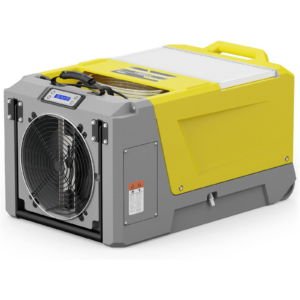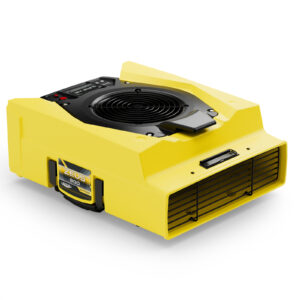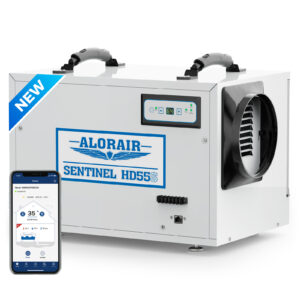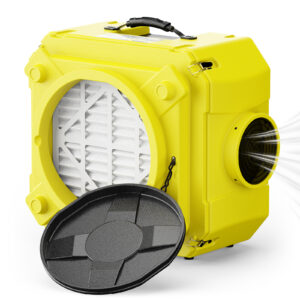Dehumidifiers are famous electrical devices that take out humidity from indoor air. When you stay in a damp climate, dehumidifiers provide a broad range of advantages for your well-being and house. Certainly, these advantages have their price. This matters, particularly for those living in damp regions of Australia such as coastal New South Wales and Queensland.
This is because with energy costs increasing, every device adds up. Today’s post will discuss how much does it cost to run a dehumidifier in Australia, what impacts those prices, how to measure your own, and how to save energy costs.
How a Dehumidifier Uses Electricity?
An air dehumidifier operates by bringing in damp air, extracting the dampness, and letting out dry air back into the area. This method runs a fan, a cooling coil, and a heater or reheat setup. Every element sucks electricity.
The volume of electricity utilized relies on various factors:
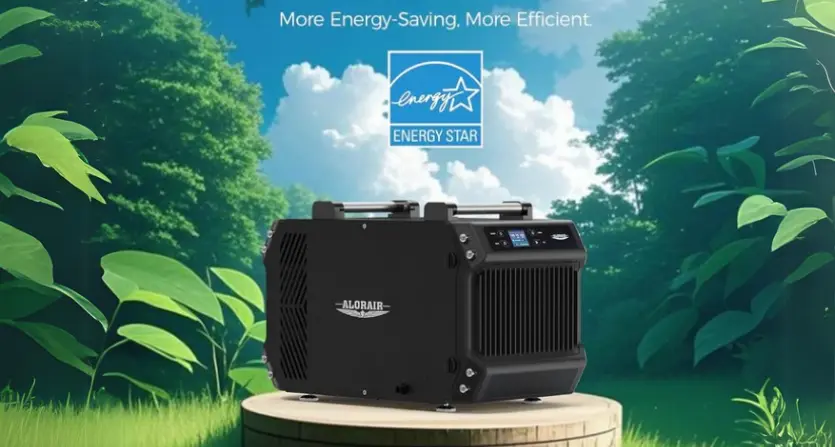
- Size of the Unit: A small dehumidifier consumes less power in comparison to a larger one. For instance, a 10-litre dehumidifier will use less energy than a 30-litre unit.
- Operating Time: When you operate the dehumidifier around the clock, your prices will be sky-high. This is the reason several people question, How much does it cost to run a dehumidifier 24/7?
- Moisture Level: Excessive humidity in the air indicates that the dehumidifier should be put in more effort and for longer. This consumes more electricity.
- Climate: Damp areas such as NT or QLD might need extended activity periods that drier states.
To simplify the price, we utilize kilowatt-hours (kWh). In this manner, power usage is estimated. For instance, in case a dehumidifier consumes 500 watts (0.5 kW) and operates for 4 hours, it uses 2 kWh.
When the regional rate is $0.35 per kWh, it charges $0.70 to work that day. That said, knowing how much electricity does it cost to run a dehumidifier assists you in selecting the correct dehumidifier and control your use better.
How Much Does It Cost to Run a Dehumidifier?
Average Cost of Running a Dehumidifier in Australia
In Australia, electricity rates differ; however, the majority of houses pay between $0.30 and $0.45 per kWh. This price assists in measuring what deal your air dehumidifier introduces to the utility bill.
Here’s a breakdown of average routine operating costs:
Small dehumidifier (10L/day)
- Consumes about 200_300 watts daily.
- Cost: $0.10–$0.25 per day when working for 4–8 hours.
Medium Model (20–30L/day)
- Consumes around 400_600 watts per hour.
- Cost: $0.30–$0.70 per day
Big Unit or Whole-house Dehumidifier
- Can utilize 700_1000 watts or more per hour.
- Cost: $0.80–$1.50 daily, based on use.
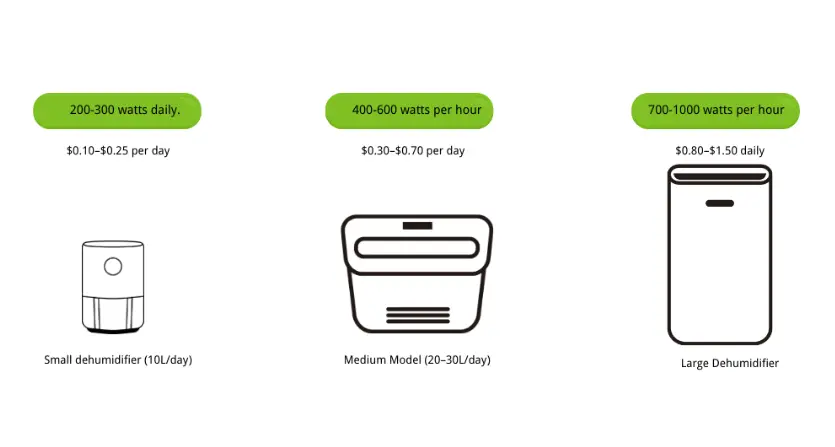
How much does it cost to run a dehumidifier 24/7? The price will jump up. A 500-watt dehumidifier operating 24/7 can consume 12 kWh routinely. At $0.35 per kWh, that amounts to $4.20 daily, or above $120 per month.
You can reduce these expenses by selecting the correct unit size, working just when required, and using smart settings. For those wondering how much does it cost to run a small dehumidifier, the answer is _ it’s among the most budget-friendly approaches to manage indoor humidity.
What Factors Affect Operating Costs?
Various key elements affect how much electricity does it cost to run a dehumidifier in your house. These involve your locality, the size of space, the amount of dampness present, and the design and efficiency of your device.
Climate Zone
Australia faces diverse climates. In damp zones such as Queensland and the Northern Territory, elevated humidity is usual over the year. In such places, a dehumidifier might have to operate for extended durations every day, raising power usage.
However, drier zones like South Australia or Western Australia mostly require occasional use. Moreover, seasonal situations play a part in this. Southern areas might just require a dehumidifier in winter when indoor humidity becomes an issue.
Room Size
Bigger rooms need powerful units or endless running to efficiently eliminate dampness. For instance, running a compact dehumidifier in a free-plan living room might cause longer runtimes and greater power usage.
That said, a rightly sized air dehumidifier can attain the required humidity level quickly and turn off sooner. This saves electricity and lowers operating costs. When the dehumidifier is too small, it might work the whole day and yet not get to the target.
Humidity Levels
Houses with too much humidity require more water removal. Spaces such as laundries, bathrooms, or basements mostly have persistent moisture, specifically when they have poor air circulation.
These situations pressure the dehumidifier to operate harder and more. Besides, when the indoor air constantly feels sticky or you observe moisture on windows, it suggests your unit will be forced to operate additional hours a day to hold humidity in check. Of course, this boosts your energy bill.
Insulation and Sealing
Air leaks or bad insulation let damp outside air in and dry indoor air to get away. Consequently, the dehumidifier has to resume the drying cycle more frequently.
Houses with better insulation and secured windows and doors keep dry air longer, lowering the timespan required to operate the unit. This assists in reducing the energy usage over time.
Dehumidifier Efficiency
Previous units or models without energy-efficiency features generally use more energy. Several older or cheap models are short of humidity sensors or timers. So, they work more than required, wasting energy.
Present-day units, particularly commercial dehumidifiers, might have smart controls such as mechanical shutoff and energy-saving compressors. These attributes help reduce working costs by consuming just the power required to keep ideal humidity levels.
How to Estimate Your Own Dehumidifier Costs?
You can figure out how much electricity does it cost to run a dehumidifier in your house with an easy formula. Stick to the following three steps:
- Discover the unit’s wattage: Examine the product manual or label. Maximum air dehumidifiers consume between 200W and 1000W based on size.
- Multiply by hours utilized daily: Determine the number of hours you operate it every day. For instance, 8 hours for a medium-sized room.
- Multiply by your electricity rate: Apply your local kWh rate. For Australia, typically this is between $0.30 and $0.45 per kWh.
For following actual usage, test any energy tracking plug. They are provided at hardware stores such as Bunnings. Additionally, you can get online calculators that offer a fast price estimate through your unit’s wattage and local rate.
How to Reduce Dehumidifier Running Costs?
Although the cost to operate a dehumidifier is quite common overall, there are a few easy ways to make this device as efficient as possible. As a result, this might knock down energy costs.
- Use a smart humidistat or auto mode: The majority of advanced air dehumidifiers come with a fitted humidistat. This calculates indoor dampness and switches the dehumidifier on or off as required. Adjust it to keep 50-55% humidity. This prevents wear and saves energy.
- Run during off-peak electricity hours: A few regions provide reduced electricity rates during low-traffic hours, such as early morning or late night. In case your plan permits, operate the dehumidifier during such hours to decrease your bill.
- Improve air circulation: Run ceiling fans or unlock interior doors to assist drying air to shift across the room. Better air circulation helps the dehumidifier run quickly and more effectively.
- Clean filters and coils: Dirty filters lower efficiency and multiply electricity usage. Inspect and cleanse your filters routinely _ particularly in dusty settings or when the dehumidifier works daily.
- Pick the right size: Selecting the right dehumidifier size is important. A big unit might switch on and off often, misusing power. A small one might work all the time, and still not clear away sufficient humidity. Suit the unit to your room size and moisture level.
- Choose Alorairau: At Alorairau, we bring energy-saving air dehumidifiers designed for Australian states. These appliances are trustworthy, long-lasting, and help keep your power usage in check. Visit Alorairau today to breathe easy.
Conclusion
So, how much does it cost to run a dehumidifier? The answer rests on the size of your dehumidifier, use, and electricity rate. However, by picking the correct unit and smart practices, the cost can remain low while the advantages stay high.





